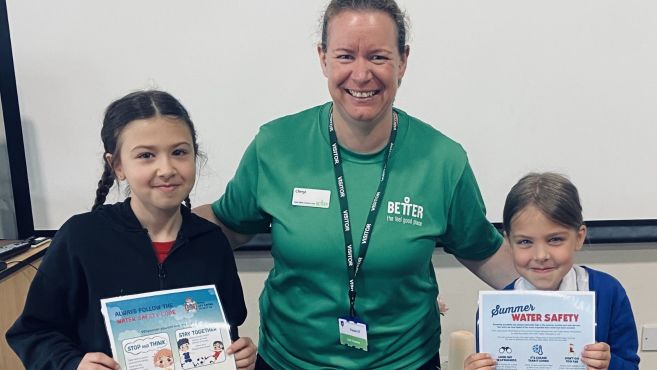Water safety advice as Spring warms up
Parents in Swindon are being urged to keep their children safe around open water these Easter holidays.
Even though the weather has been sunny and the temperatures warm recently, lakes and rivers have not heated up enough yet to safely swim in them.
The best way to tell if a body of water is safe to swim in, are the red and yellow flags that can be found at many beaches and lakes.
Cheryl Pottinger, GLL’s swim school lead for the Swindon area and inclusion swimming specialist at the Link Centre, recently told Greatest Hits Radio: “People think ‘Oh, it's a nice sunny day, I'm going to get in the water and cool off’. And they don't appreciate that actually, that water is not as warm as it looks.
“So, they can suffer from something called cold water shock, which is when you get into the water suddenly and then it takes your breath away. And if your mouth is too close to the water, obviously you're going to inhale the water, which isn't very good for you.
“And then other things are just the surroundings. You don't know how deep that water is. You don't know what's underneath the water. You don't know if you can get in and out safely.
“So, there's a lot of various dangers at this time of the year.”
During swim lessons at Swindon’s GLL-run leisure centres, the Dorcan Health & Recreation Complex and the Link Centre, children as well as adults are told how to act responsibly around bodies of water.
This includes gaining an understanding of when water is safe to swim in, but also how to behave if a friend or even their pet falls in.
“We educate the children”, explained Ms. Pottinger.
“If you were to jump or fall in, then to roll over onto your back and float and then how to shout for help and get people to help you.
“We also talk about if one of their friends was to get into trouble in the water. It's not always safe to jump in after them. So, we talk about what equipment can we use to rescue them, such as ropes, taking a jumper off, passing lifeboats out to them which are quite often around. Calling 999, getting adults and things like that”.
For the past two years, they have also done educational work in schools for all those children who do not take part in school or extra-curricular swimming lessons.
According to Ms. Pottinger, the majority of primary school children still remember the most important messages when they go back to a school for more water safety education.
However, it is secondary school pupils that she is most concerned about.
“The age group that is probably missing out on the engagement are the teenage years, because trying to go into a secondary school and spreading that message probably wouldn't go down as well as it would in a primary school.
“But they are more at risk because they're more likely to follow their peers and more likely to be out without parents.”
It is also crucial that parents understand the dangers of open water and can educate their children properly.
Ms. Pottinger stressed that not enough adults have an appropriate understanding of the risks, though.
“What is quite interesting is that a lot of the children are quite aware, but the parents aren't”, she said.
“So, I think a lot of it is the parents to get themselves aware of certain dangers, and there is much information online.
“I also think parents sometimes don't want to scare their children, but actually, that information needs to be made available to sort of to stop the children.
“I think we're trying to protect them by not telling them, but actually protecting them is telling them.”
